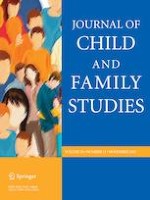08-10-2022 | Original Paper
Children’s Dopaminergic Genotype is Associated with Maternal Reports of Household Chaos during Middle Childhood
Gepubliceerd in: Journal of Child and Family Studies | Uitgave 11/2023
Log in om toegang te krijgenAbstract
Exposure to household chaos has important implications for youth’s developmental outcomes, yet variation exists in the exposure to such environments. The dopaminergic gene system represents a biologically relevant pathway that may help account for some of the variation in the home environment. The current study tests the association between mother’s and children’s dopaminergic genotype(s) and reports of family household chaos. Genotypic data for mothers and children (N = 2605) of the Fragile Families and Child Wellbeing Study (FFCWS) are utilized to examine whether variation in mother’s and children’s dopaminergic polygenic scores comprised of four dopamine polymorphisms are associated with mother- and child-reported household chaos during ages 9–18. Children’s dopaminergic polygenic score was associated with maternal reports of household chaos at approximately age 9. Mother’s dopaminergic genotype was not significantly associated with maternal reports or child reports of household chaos. Variation in children’s dopaminergic genotype may be linked to maternal perceptions of household chaos, thereby suggesting the presence of an evocative and/or active gene-environment correlation during middle childhood.
